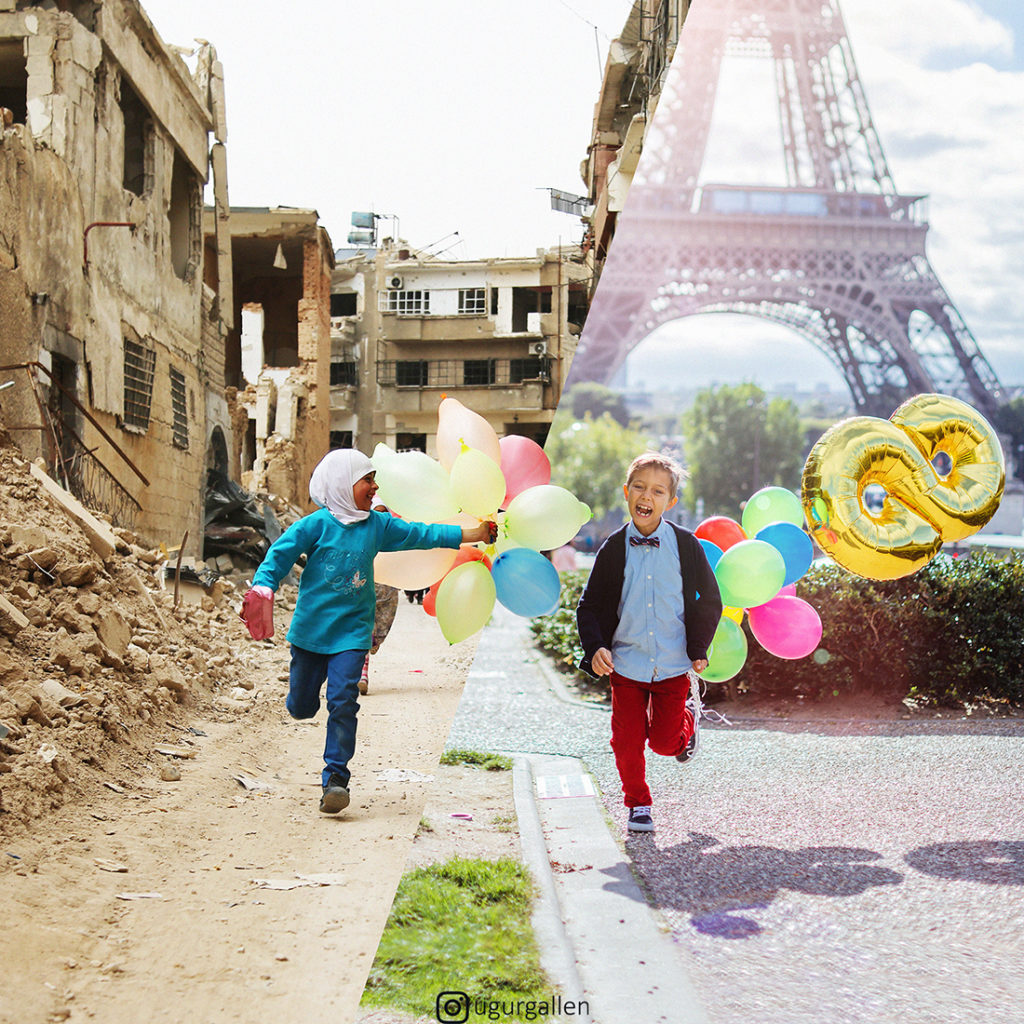1.Tell us what you do and your beginnings.
I am a collage artist who makes digital collage works for awareness. I started working on photomontages and collages on popular culture and political humor as a hobby in 2014. At that time, I had a full-time job.
One morning in September 2015, I saw the photograph of Aylan Kurdi, 3 years old child, one of the thousands of people who drowned crossing the Aegean Sea on the news. I created my first work with the effect that photo had on me: there is a bucket of equipment used to build a sand castle at the feet of baby Aylan whose dead body washed up on the shore of the Mediterranean Sea. And the shadow of Aylan is a child playing with this bucket falls on the beach.
Which he was suppose to be doing, instead of dying. In the beginning of 2016, when I saw the fear and helplessness in the eyes of children in a refugee news I watched, I thought that I should do something to raise awareness about these problems. And this is how I started my work, which I combined two photographs with a sharp line and called the Parallel Universes.

2.What does your work aim to say?
I use photos of photojournalists from many countries of the world and who have documented different problems in my works. All photos are from real events. These photographs show us problems such as war – conflicts, refugees – immigrants, environmental problems, women’s and children’s rights, animal rights, etc.
As human beings, we do not understand the problems that we see in the news and events in different parts of the world, and what the people who feel those problems are going through. Because it doesn’t happen to us. In my works, I use people, figures and objects from everyday life to make them touch us more. Only in this way can we understand and empathize with what happened. We can know the value of what we have. Or we can demand what we don’t have. With my works, I aim to make people empathize with the problems in the world. Thanks to this empathy, I think we can minimize these problems.
I remind people of events that happened and forgotten years ago with my works. Sometimes we need to remember, for it not to happen again. My work is taught as a subject in lectures by teachers in many countries. Teachers are brainstorming for students to see and understand the world’s problems. Some teachers have been inspired by my work and are doing work done by students; this is very valuable and important to me.

3.Where do you find inspiration for your art?
My inspiration is life itself. Duality that we live in, the nature of the human beings; greed, power, also love and effection. My inspiration is being hungry for a better world. Want to See children happy and playing, not dying or frustrating over fear of their lives. I follow the news and photojournalists whom tell and show us the problems the humanity have been experiencing with a single photograph. And I use those photos, use the duality as my tool and create collages combining what is and what is should be. My inspiration is trying to be a better person.
More on #MuseumWeek Magazine.
